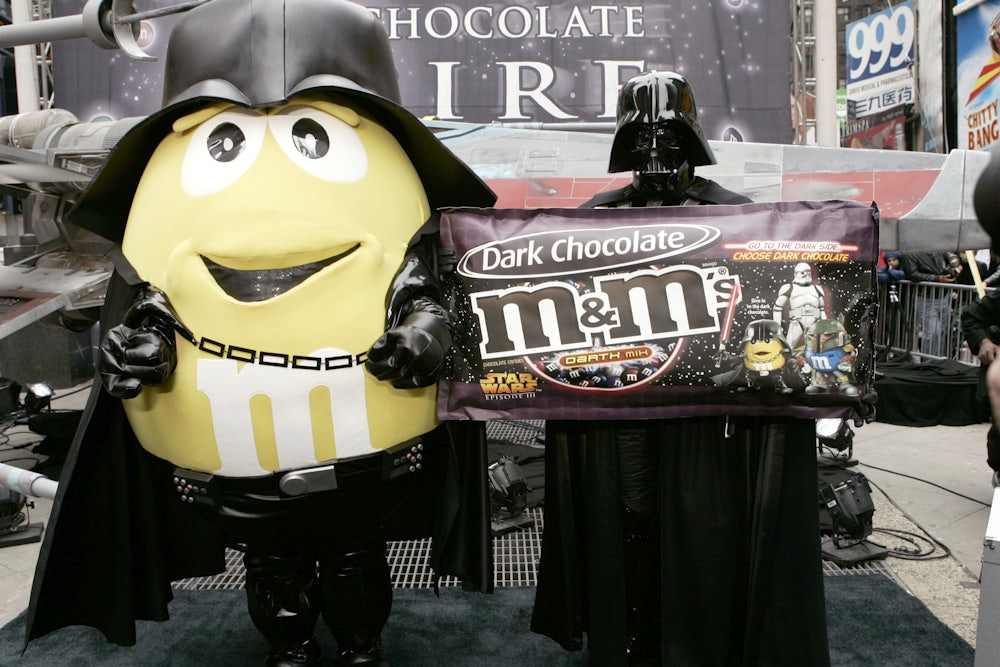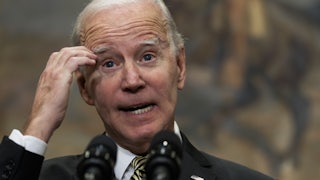Candy prices jumped more than 13 percent over the past year, according to the Bureau of Labor Statistics. That’s the largest single-year jump ever, reports The Wall Street Journal. It used to take nine years for the price of candy to rise 13 percent, notes National Public Radio. Now it takes 12 months. Happy Halloween!
The principal reasons for the steep hike, according to the Journal and NPR, are the fast-rising costs of sugar, flour, milk, and labor. Sugar is up 17.1 percent over the past year; flour is up 24 percent; milk is up 15.2 percent. Labor costs are up 5.1 percent.
Still, the price rises are hardly uniform. Citing figures from Datasembly, which tracks product prices, the Journal said that among the dozen most popular Halloween candies, the steepest price hikes were for Starburst (up 35 percent) and Skittles (up 42 percent). Both these candies are made by Mars, Inc., a privately held company that, along with Hershey, dominates the U.S. candy market.
Mars is headquartered in an unmarked low-rise in McLean, Virginia, the same Washington, D.C., suburb where the Central Intelligence Agency resides, and the family that owns it is more secretive than The Company. It has no visible presence in the capital. The names of family members are not chiseled in the marbled lobbies of its museums and hospitals; according to a tally for 2018, the last year for which data are available, the combined monetary assets of the four Mars family foundations put them in the bottom quarter among the country’s 50 richest families. Perhaps you think that’s because the Mars family’s combined wealth ranks it in the bottom quarter of the 50 richest families. Guess again. The Marses are the third-richest family in the United States, according to a December 2020 survey by Forbes, worth $94 billion collectively. Only the Waltons ($247 billion) and the Kochs ($100 billion) sit atop taller piles of cash. Between 1983 and 2020, according to a report by the nonprofit Institute for Policy Studies, the Mars family’s wealth grew by 3,517 percent, and that’s corrected for inflation. They didn’t get there by absorbing price shocks in supplies and labor for Halloween Starbursts and Skittles.
The business was founded in Seattle by patriarch Frank Mars (1883–1934), who developed the Snickers bar, and it was greatly expanded by Frank’s son Forrest Mars (1904–1999), who developed the Milky Way bar and M&Ms. Father and son did not get along, and Forrest didn’t attend Frank’s funeral. In the late 1940s, Forrest moved to a farm in Virginia hunt country. Eventually he moved Mars headquarters from Chicago to downtown D.C. and then, in 1984, to McLean. In 1973 Forrest passed the company along to his two sons, Forrest Jr. (1931–2016) and John, who became co-presidents, and to his daughter Jackie. Jackie’s son Stephen Badger was identified last year by Business Insider as Mars’s chairman, but today the company website identifies him as “former chairman.” That’s pretty close to all that’s known about the Mars family; they have always shunned publicity.
As recently as the 1960s, according to a 2013 report in Time, the U.S. candy market was largely regional. For instance, NECCO, the company that made NECCO wafers and Mary Janes, was the New England Confectionary Company. (It got bought out in 2018.) Hershey and Mars started buying out independent candymakers in earnest in the 1970s, and by 2013 they controlled 60 percent of the candy market in the U.S. and 75 percent of the chocolate market.
“If we want a healthier, more diverse market—and more variety in our Halloween buckets,” the author of the Time piece wrote,
we could start by reviving some of our antitrust laws, which we traditionally used to create a level playing field among companies, regardless of size. Enforcing current laws—whittled down by federal courts—won’t do much to dent the dominance of Mars and Hershey or the massive retailers, but it could curb their ability to throw their weight around at the expense of the independents.
The author of the Time piece was Lina Khan, who today chairs the Federal Trade Commission, which, along with the Justice Department, polices antitrust violations. Maybe the Biden administration will cast a skeptical eye on M&A by the manufacturers of M&Ms.
In the meantime, Senator Bernie Sanders thunders on Twitter, “While the cost of Halloween candy has surged more than 13.1 percent since last September, the Mars candy bar family became 44 percent richer during the pandemic increasing their wealth by $32.6 billion.” It’s a fair point. But that’s not how patrimonial capitalism works, as practiced by the Mars family.






